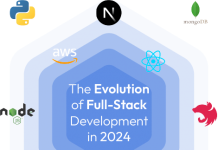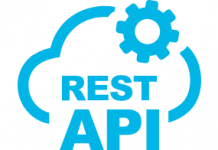In today’s digital landscape, building scalable full stack applications is crucial for meeting the demands of growing user bases and evolving business requirements.
Scalability ensures that your application can handle increased traffic, data, and functionality without sacrificing performance.
To achieve this, it’s essential to follow best practices throughout the development process. Here are some key strategies for building scalable full stack applications:
- Use Microservices Architecture: Break down your application into smaller, independently deployable services that focus on specific functions. This architecture allows for better scalability as each service can be scaled independently based on demand.
- Choose the Right Technologies: Selecting the appropriate technologies for each layer of your application stack is vital for scalability. Use frameworks and languages known for their scalability, such as Node.js for backend, React or Angular for frontend, and databases like MongoDB or PostgreSQL.
- Implement Caching: Utilize caching mechanisms to store frequently accessed data closer to the user, reducing the load on your servers. Use caching solutions like Redis or Memcached to improve performance and scalability.
- Horizontal Scaling: Design your application to scale horizontally by adding more instances of servers or containers to distribute the load. Use load balancers to evenly distribute incoming requests across multiple server instances.
- Database Scaling Strategies: Choose databases that support horizontal scaling, such as NoSQL databases like Cassandra or MongoDB. Implement sharding and replication techniques to distribute data across multiple servers and ensure high availability.
- Optimize Frontend Performance: Minimize the size of assets such as JavaScript, CSS, and images to reduce load times for users. Implement lazy loading and code splitting techniques to only load resources when needed, improving overall performance and scalability.
- Monitor and Analyze Performance: Use monitoring tools to track the performance of your application in real-time. Monitor key metrics such as response times, error rates, and resource utilization to identify bottlenecks and optimize performance.
- Automate Deployment and Scaling: Implement continuous integration and continuous deployment (CI/CD) pipelines to automate the deployment process. Use containerization technologies like Docker and orchestration tools like Kubernetes to efficiently manage and scale your application infrastructure.
- Implement Rate Limiting and Throttling: Protect your application from abuse and prevent overload by implementing rate limiting and throttling mechanisms. Control the rate of incoming requests to ensure fair usage and maintain system stability.
By following these best practices, you can build scalable full stack applications that can handle increased user demand and adapt to changing requirements effectively.
Scalability is not just about handling more users; it’s also about building a resilient and high-performing system that can grow with your business.
Master Your Coding Skills with BootSelf AI
If you're looking to enhance your coding abilities and upskill in artificial intelligence, look no further than the BootSelf AI app. This innovative platform provides AI-based coding lessons that are tailored to your individual learning pace.
Available on both iOS and Android, you can download the BootSelf AI app and start mastering coding skills today:












